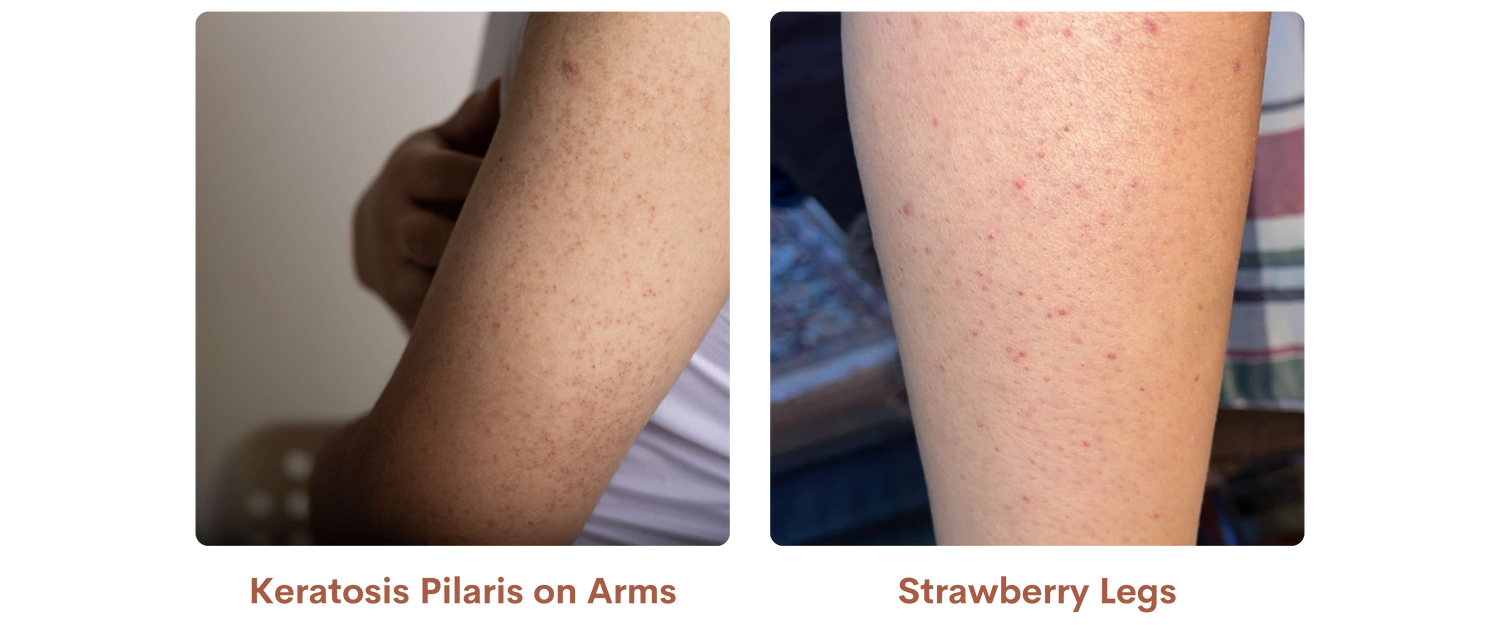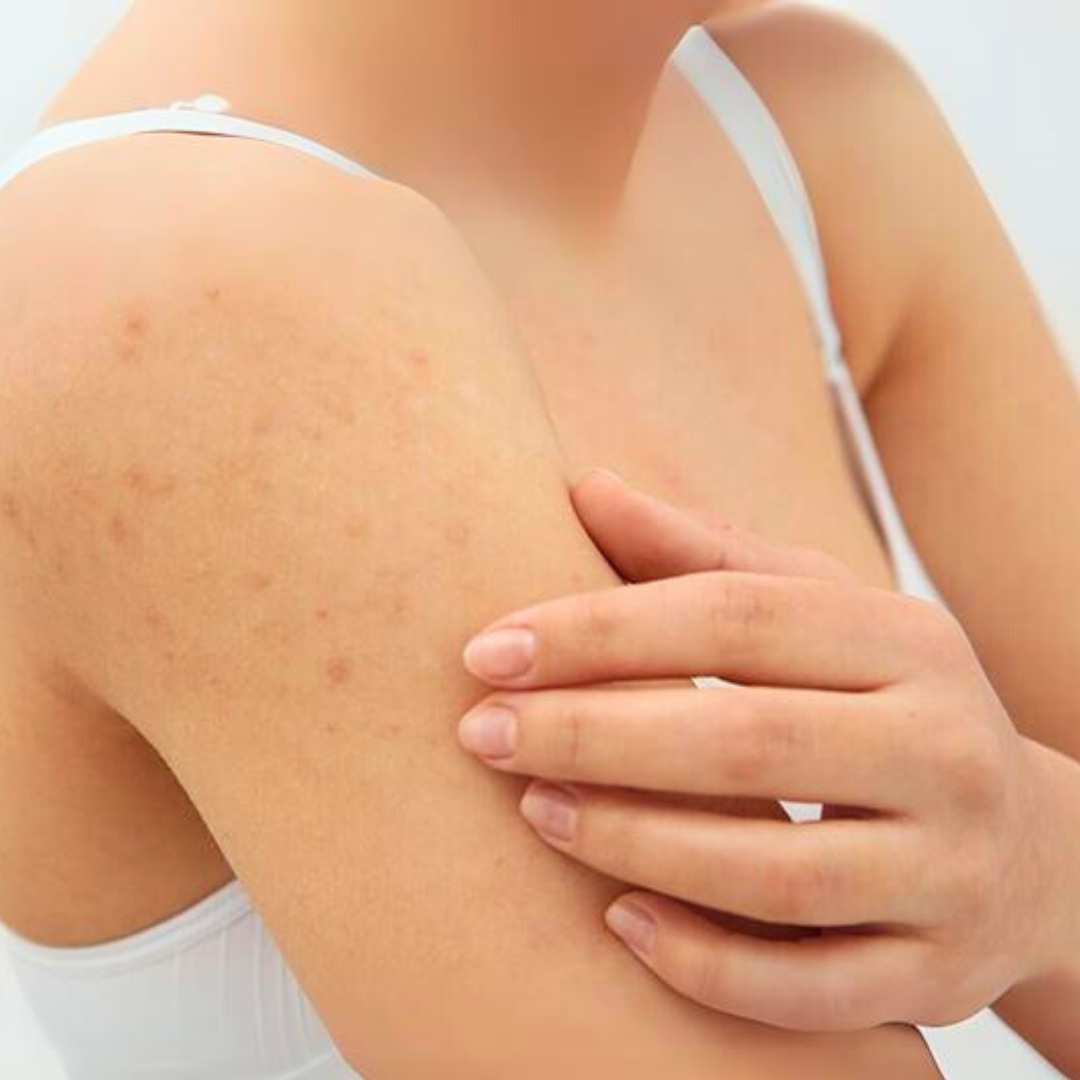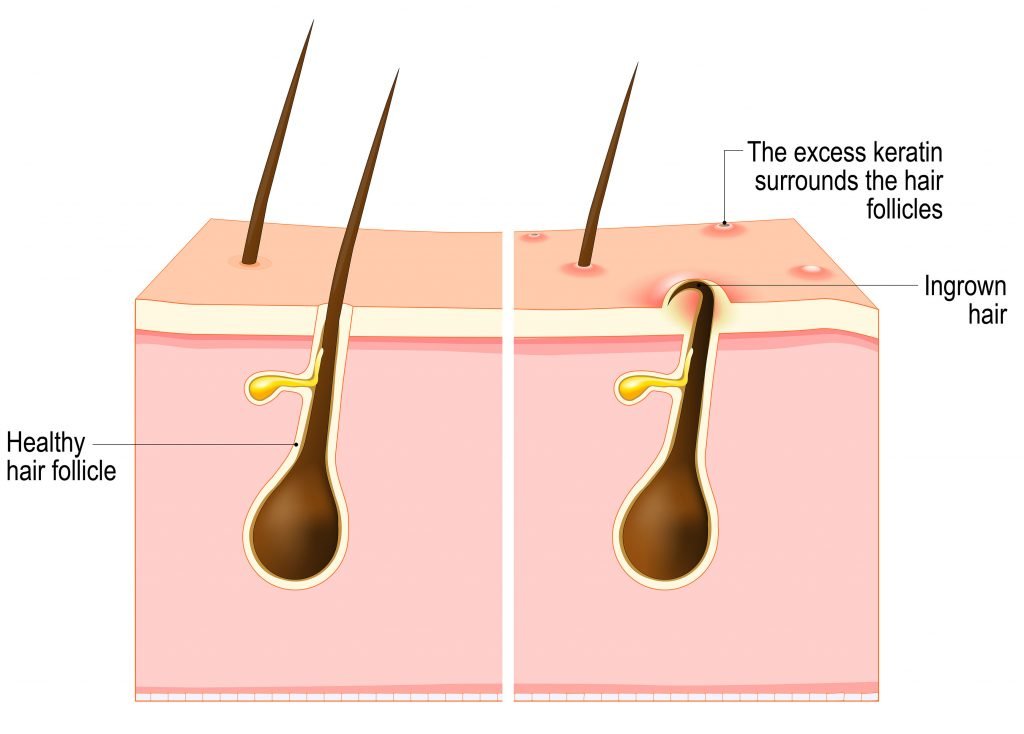What is KP?


Keratosis pilaris (also known as follicular keratosis or “chicken skin”) is a common cosmetic skin condition that affects 50% of adults and 80% of adolescents, both male and female. KP is often quite noticeable – numerous small, rough, red bumps cover the upper arms, legs, buttocks, and sometimes cheeks. While the bumps are usually not painful or itchy, picking at them can cause bleeding and scarring.

How do I know if I have KP?
~Painless tiny bumps, most commonly on upper arms and thighs
~Sandpaper-like texture and appearance on skin
~White or red bumps can occasionally but not necessarily be itchy
~Resembles irritated goose bumps or dry pimples
~Seems like dozens of ingrown hairs on arms, legs, buttocks, or cheeks
~Bumps can be more pronounced in colder months

What causes KP?
Keratosis Pilaris happens when your body makes excess keratin. Keratin is a natural protein found in our skin. You start seeing KP spots when there's surplus keratin and it starts surrounding and trapping the hair follicles in your pores causing the formation of hard plugs known as hyperkeratinization.
The plugs start creating bunches of small, red bumps on your arms, legs, buttocks, and sometimes cheeks. They could be on one of these body parts, some of them, or all of them.
KP is Not:
It's possible to have these conditions at the same time, but they must be treated independently.
-

Acne
-

Eczema
-

Psoriasis
-

Painful rash
How to manage Keratosis Pilaris ?
Unfortunately there is no cure for KP. For some people, keratosis pilaris goes away on its own as they reach adulthood. But for most, it lasts a lifetime. Although it’s not harmful for the skin, KP can be both irritating and embarrassing. Many people with KP-prone skin find it helpful to know about the different options for treatment and management so that they can find the right approach for their own skin.
Regular treatment with Subtle Skin can help you manage KP better.
-

Avoid hot water and long showers/baths
-

Limit the use of a physical exfoliator in the shower to once or twice a week
-

Limit chemical exfoliation to 3-4 times per week
-

Avoid high strength acids in exfoliating creams or peels
-
-

Moisturize at least once daily
-

Use a humidifier in dry conditions
-











